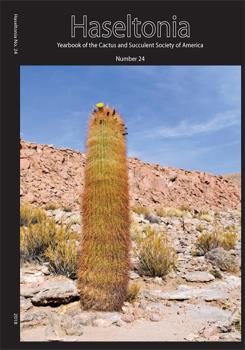Most cacti in subfamily Cactoideae have a thick cortex vascularized by a network of cortical bundles. It was noticed that some cortical bundles had a leaf-like feature: clusters of terminal tracheids. The objective of this research was to examine a range of species and characterize the clusters. Of the 226 species examined in 85 genera, 105 (46.7%) had clusters of terminal tracheids. Species with clusters were widely distributed throughout the subfamily. A few genera were uniform, with all sampled species having clusters (Ariocarpus, Corryocactus) or with all sampled species lacking them (Armatocereus, Mammillaria, Melocactus). Most genera were variable (e. g., Cereus, Cleistocactus) having some species with terminal tracheid clusters and other species lacking them. Where present, the clusters consisted of short, broad tracheids (not vessel elements), one or several phloem poles, but never fibers or sclereids (except Strombocactus disciformis). Clusters were most likely to occur at the apex of a rib or tubercle, especially near an areole; they often also occurred along the face of a rib; they were least common at the sinuses between ribs. Without exception, they occurred within the palisade cortex or along its base but never deep within the cortex. No ecological or functional role was obvious.
How to translate text using browser tools
1 August 2018
Many Cacti Have Clusters of Terminal Tracheids on Their Cortical Bundles
James D. Mauseth
ACCESS THE FULL ARTICLE
<
Previous Article
|

Haseltonia
Vol. 2018 • No. 24
August 2018
Vol. 2018 • No. 24
August 2018
Cactaceae
cortical bundles
terminal tracheids
venation
xylem




